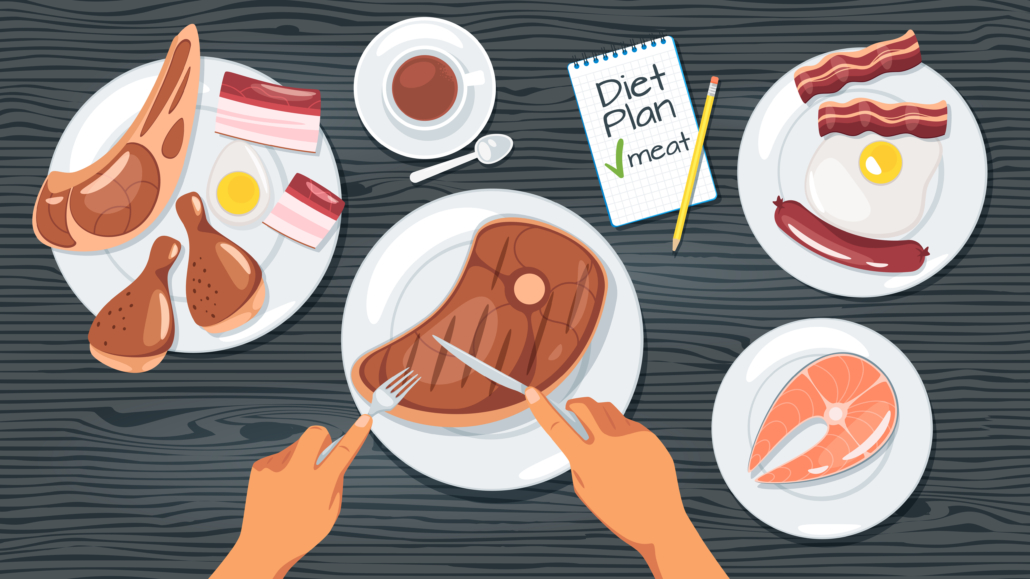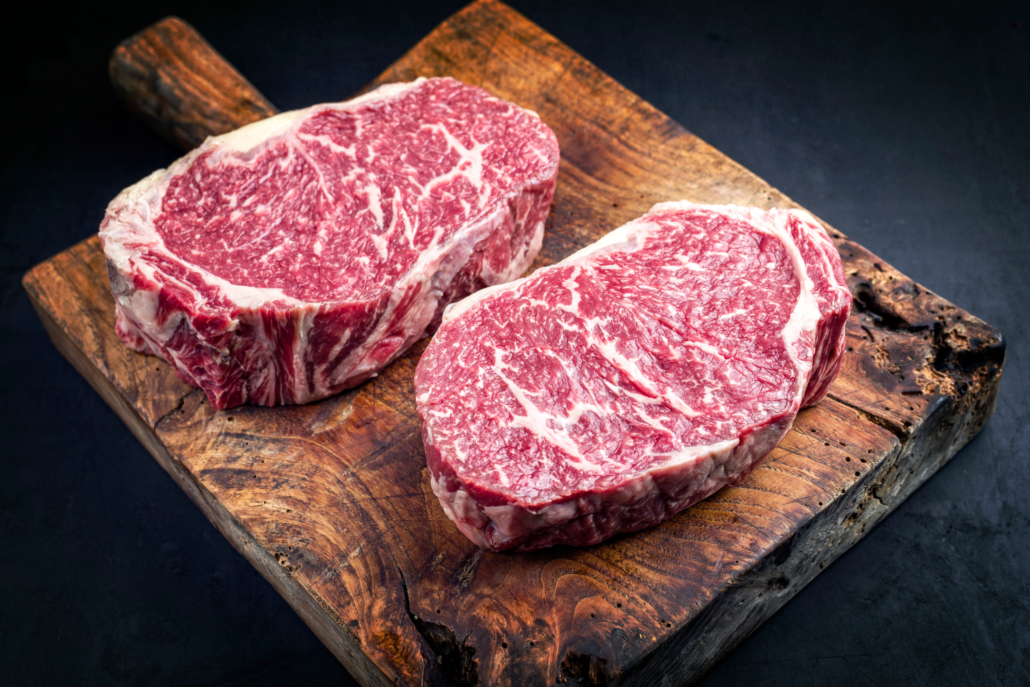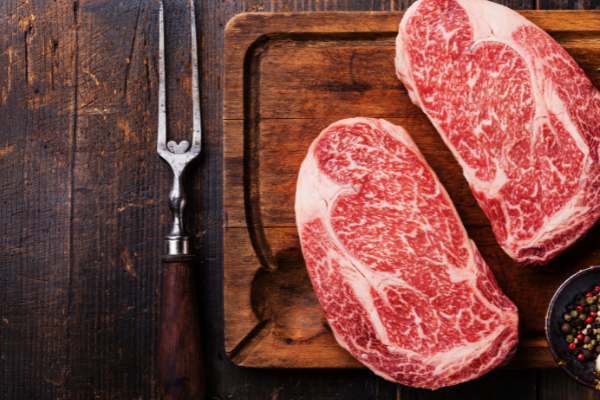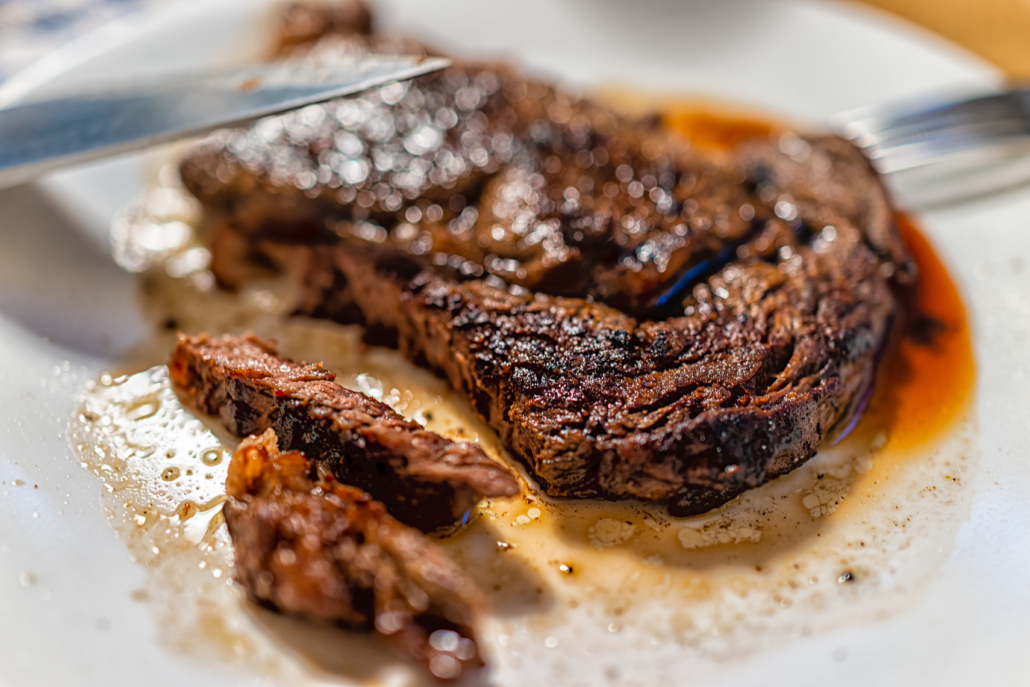We include products in articles we think are useful for our readers. If you buy products or services through links on our website, we may earn a small commission.
How to Start a Carnivore Diet: 12 Steps

In recent years, the carnivore diet has gained popularity as an approach to radically transforming your health and well-being. Advocating for the sole consumption of animal products while eliminating all plant-based foods, the carnivore lifestyle can promote various health benefits, including weight loss, improved mental clarity, and relief from autoimmune conditions. However, it can be daunting to make such a dramatic departure from the standard American diet loaded with grains and processed foods. In this article, we’ll offer the practical tips you need to start on the carnivore diet, enjoy it, and receive its bevy of powerful benefits.
Table of Contents
1. Commit to a Time Period (30-90 days)
Commitment is key. Starting on the carnivore diet is a major physical and mental change for most people.
The transitional to carnivore can be rife with sugar cravings and potentially uncomfortable yet temporary side effects like nausea, lethargy, diarrhea, and constipation.
To get through this period, which can last anywhere from a day up to two weeks, it’s helpful to expand your carnivore diet goals to a longer timeframe.
For most people, 30 days is the minimum. A 60-90-day commitment gives you enough runway to adjust your food choices and meal plans according to your needs. A longer time frame will allow you to see the benefits fully develop and take root.
The 30-day commitment is the approach taken by prominent carnivore diet enthusiasts like Dr. Ken Berry and Dr. Shawn Baker. Both men came from keto backgrounds, experimented by eliminating all plant foods for 30 days, and never looked back.
2. Remove Temptations: Clean Out Your Pantry and Fridge
The Standard American Diet (SAD is primarily made up of grains, added sugars, and vegetable oils. Together, these “foods” make up over 60% of the SAD caloric intake. Studies show that sugar alone is addictive and becomes even harder to resist when packaged with carbs and fat.
Most of us don’t consume junk food because our bodies are actually hungry for it. We eat junk because we’re addicted. High-sugar foods have been found to stimulate reward receptors in the brain more powerfully than cocaine and heroin.
As with any drug, letting go of non-carnivore foods isn’t a matter of willpower. It’s a matter of strategy.
The most powerful step you can take to support your carnivore journey is to get rid of any food in your house that isn’t on the carnivore diet food list.
Think of it like this: Would you rather wage a battle 24/7 against the chips, cookies, sweets, bread, and pasta in your cupboard? Or would you rather stave off your cravings for the few seconds it takes you to pass the junk food aisle in the supermarket?
Part and parcel to removing temptations from your house is to let your friends and family know that you’re on a carnivore challenge. They’ll probably be shocked. Explain that you’re eating this way to improve your health, and you’d like them to be open to it and not guilt trip you into eating food that doesn’t align with your goals.
And don’t worry; the temporary cravings will subside. You’ll be rewarded by the satiating power of nutrient-dense superfoods. Once your hunger hormones re-adjust to healthy levels after kicking sugar, you’ll be free from hunger cravings.
3. Join a Carnivore Community
Joining a carnivore community online or in person can make or break your carnivore diet experience.
Carnivore communities are a place to share and learn with others on this powerful journey of transformation.
4. Go Shopping for High-Quality Meats and Animal Fats
This step is fun! A carnivore diet is a low-carb, high-fat way of eating, which means that you have to load up on succulent, fatty meats.
Aim for at least a 1:1 gram of fat to protein ratio. Since fat has about twice as many calories per gram as protein, you’ll nourish your body with the fat it needs without risking protein poisoning.
But don’t worry if you have trouble getting all the fat from your meats alone. Add a couple of tablespoons of butter, ghee, or tallow to your meals, and you should have no problem meeting your macronutrient goals.
Here’s a rundown of the best cuts of steak, lamb, and pork to choose from, along with animal fats, seafood, and carnivore-friendly cheeses.
Fatty Cuts of Steak
| Beef Cut | Calories | Fat | Protein | Carbs | % Calories from fat | % Calories from protein |
| Boneless short ribs | 440 | 41 | 16 | 0 | 84 | 15 |
| Tri-tip roast | 340 | 29 | 18 | 0 | 77 | 21 |
| Beef Back Ribs | 310 | 26 | 19 | 0 | 75 | 25 |
| Ribeye | 310 | 25 | 20 | 0 | 73 | 26 |
| Porterhouse | 280 | 22 | 21 | 0 | 70 | 30 |
| Top Sirloin | 240 | 16 | 22 | 0 | 60 | 37 |
| 80/20 Ground Beef | 307 | 19.6 | 30.5 | 0 | 59 | 41 |
| Skirt Steak | 265 | 16.5 | 27 | 0 | 58 | 42 |
| Brisket | 245 | 14.7 | 28 | 0 | 54 | 46 |
| Flank Steak | 200 | 8 | 32 | 0 | 36 | 64 |
Cuts of Lamb
| Lamb Cut | Calories | Fat | Protein | Carbs | % Calories from Fat | % Calories from Carbs |
| Chop/Rack | 330 | 22 | 30 | 0 | 63 | 37 |
| Loin Chop | 330 | 22 | 30 | 0 | 63 | 37 |
| Leg | 292 | 18.7 | 29.3 | 0 | 59 | 41 |
| Shank | 276 | 14.7 | 32 | 0 | 52 | 48 |
| Shoulder | 148 | 6 | 22.8 | 0 | 37 | 63 |
Carnivore Cuts of Pork
| Pork Cut | Calories | Fat | Protein | % Calories Fat | % Calories Protein |
| Pork Belly | 588 | 60 | 10.4 | 92 | 7 |
| Baby back ribs | 315 | 27 | 18 | 77 | 23 |
| Pork Hocks | 285 | 24 | 17 | 76 | 24 |
| Shoulder | 285 | 23 | 19 | 73 | 27 |
| Bacon | 600 | 47.2 | 41.9 | 71 | 28 |
| Butt | 240 | 18 | 19 | 68 | 32 |
| Leg Ham | 305 | 20 | 30.4 | 59 | 40 |
| Loin | 265 | 15.5 | 30.8 | 53 | 46 |
| Chop | 241 | 12 | 33 | 45 | 55 |
| Tenderloin | 158 | 4 | 30 | 23 | 76 |
Carnivore Diet Animal Fats
Nutrition info per 1 tablespoon
| Type | SFA% | PUFA % | Carbs | Total Fat | Notes |
| Beef Tallow | 49.8 | 3.1 | 0g | 12.8 | Mild beef flavor Can be heated |
| Lard | 41 | 12 | 0g | 13g | Mild flavor Can be heated |
| Butter | 50 | 3.4 | 0g | 12g | Mildly Sweet Lower Heat |
| Ghee | 48 | 5 | 0g | 9g | Mild nutty flavor Can be heated |
| Duck Fat | 25 | 13 | 0g | 13g | Rich Duck flavor Can be heated |
| Heavy Cream | 62 | 4 | .5g | 5.4 | Sweet and rich |
Fish
Nutrition info per 100g
| TYPE OF FISH | CALORIES | FAT | PROTEIN | CARBS | % CALORIES FROM FAT | % CALORIES FROM PROTEIN | |
| Atlantic Mackerel | 290 | 20.3 | 27 | 0 | 63 | 37 | |
| Farmed Arctic Char | 208 | 12 | 19 | 0 | 58 | 42 | |
| Anchovies | 256 | 15.9 | 28 | 0 | 56 | 44 | |
| Farmed Salmon | 234 | 14 | 25 | 0 | 56 | 44 | |
| Wild King Salmon | 195 | 13 | 22 | 0 | 54 | 46 | |
| Sardines | 139 | 8 | 19 | 0 | 50 | 50 |
Carnivore Diet Roe and Shellfish
| Type of Seafood | Calories | Fat | Protein | Carbs | % Calories from fat | % Calories from protein | % Calories from carbs |
| Salmon Caviar (Roe) | 260 | 14 | 29 | 2.9 | 45 | 52 | 3% |
| Oysters | 58 | 1.9 | 6.5 | 3.1 | 29 | 33 | 28 |
| Mussels | 97 | 2.8 | 13.5 | 4.5 | 26 | 56 | 19 |
| Shrimp | 135 | 2.0 | 25.8 | 1.7 | 18 | 78 | 4 |
| Dungeness Crab | 107 | 2.0 | 22 | 0 | 17 | 82 | 0 |
| Lobster | 116 | 1.8 | 25 | 0 | 14 | 86 | 0 |
| Clams | 82 | 1.1 | 15 | 3 | 12 | 73 | 15 |
| Scallops | 97 | 1.0 | 19 | 3 | 9 | 78 | 12 |
Carnivore Diet Cheese
| Nutrients Per 100 grams (3.5 oz) | Creamy Blue Cheese | Cream Cheese | Triple Cream Brie (Saint Andre) | Cheddar | Swiss Cheese | Parmesan |
| Fat | 43.3 | 35g | 42g | 33g | 31g | 28g |
| Carbs | .2g | 1g | 0g | 3g | 1g | 4.1g |
| Protein | 13.3 | 7g | 10.5g | 23g | 27g | 28g |
| Fat: Protein Ratio by grams | 3.25:1 | 5:1 | 4:1 | 1.4:1 | 1.1:1 | 1:1 |
5. Eat from 1-3 times a day (1-2 is best)
Most people coming to Carnivore are accustomed to eating at least three meals a day with snacks in between. This constant hunger and feeding cycle is a response to staving off the energy crashes caused by chronically high blood sugar.
But on a carnivore diet, you’ll be consuming extremely nutrient-dense foods, getting your energy from satiating fats and complete proteins. This means you won’t have blood sugar spikes and troughs.
For most people, 1-2 highly satiating carnivore meals daily is the sweet spot. In this way, the carnivore diet promotes a spontaneous intermittent fasting regimen.
This ancestral feasting/fasting cadence allows your body to fully transition from a feeding state into “rest and digest” mode. Doing so supports fat burning, reduces inflammation, and stimulates a therapeutic process of cellular repair called autophagy.
6. Eat Until Full, Don’t Count Calories
Don’t hold back on your carnivore diet meals–don’t worry about portion size, and eat until you’re comfortably full.
Our hyper-carnivorous ancestors abided by a “feasting” and fasting cycle. Meat had to be eaten in the short time that it was fresh. The modern 1-2 meal a day carnivore diet simulates this ancestral fasting and feasting pattern.
7. Center Meals Around Ruminant Meats
Ruminant meats such as fatty cuts of steak, lamb, bison, goat, and venison are the centerpiece of a well-formulated carnivore diet.
The rumen stomach metabolizes the grasses that ruminant animals graze on into nutritious saturated and monounsaturated fatty acids and a minimum of inflammatory polyunsaturated fatty acids.
Ruminant meats also have the most favorable fat-to-protein ratios, along with an abundance and wide array of micronutrients.
8. Transition Slowly if Needed
If you can, it’s best to “rip off the bandaid” and make the transition from carbs and processed foods to carnivore as soon and completely as possible. You’ll enjoy the simplicity and benefits of the carnivore diet more quickly.
However, for many people, a slower transition is necessary and supportive.
Start by eliminating all processed foods, sugars, and grains. Then, give yourself a 1-4-week window to eliminate all carbs and plant foods completely.
This tapered approach gives the stomach, gallbladder, and liver more time to adapt to metabolizing the significant increase in fat and, to a lesser extent, protein.
Here’s a breakdown of the physiological changes your body goes through in order to metabolize a meat-based diet.
- Your stomach increases acidic from pH 3-5, which is used to break down sugars and grains, to the pH 1.3-2.0 required to metabolize primarily fat and protein.
- Your gallbladder upregulates the bile necessary for digesting the increased fat intake
- The smooth muscle of your gallbladder strengthens in order to process increased fat intake
- Your liver will increase the storage of bile in its ducts to help digest increased fat intake
During this transition period, you may experience some temporary carnivore diet diarrhea.
9. Supplement if Needed
The carnivore diet is loaded with nutrients, and there’s no need to supplement with vitamins. However, it may be helpful to support your body with digestive supplements during the transition to a higher-fat diet.
Ox bile and Betaine HCL supplements can help reduce the discomfort and side effects that can occur as your body upregulates the bile needed to emulsify fats into substances that your intestines can absorb.
Bile and betaine HCL supplements may be especially helpful for people with IBS/IBD.
Electrolyte supplements can also be supportive during the transition to carnivore., As a response to cutting carbs, your body flushes significant electrolyte-rich fluids in the process of unlocking glycogen from your muscles. This fluid accounts for the first 5-25 lbs of weight that people rapidly lose on carnivore.
Keto Chow is an electrolyte formula created by Carnivore enthusiast Dr. Ken Berry. It’s strictly focused on supporting low-carb eaters with essential minerals like copper, magnesium, chromium, zinc, boron, and selenium, in addition to sodium. And it’s without sugar or flavorings.
10. Salt Your Meat
Another way to replenish your electrolytes and keep them balanced is by liberally salting your meat.
The general consensus among carnivore diet enthusiasts is to consume 12 grams (2 tsp) of salt daily in the first few days of transitioning to carnivore.
Once you feel like you’re thoroughly adapted to this no-carb lifestyle, consume at least 5 grams (about 1 tsp) of salt daily.
11. Drink plenty of water
You’ll be flushing liquid, so it’s important to replace it. Focus on still or sparkling water.
You can also drink black coffee or tea. Some carnivore dieters consider these off-limits, but Dr. Berry and Dr. Kiltz are fine with them.
Eating nose-to-tail by including organ meats and unconventional meats mirrors the way our ancestors ate animals.
Nose to tail provides the greatest nutrient density. And it helps us to be the best shepherds we can for animals and our planet. By not wasting any parts, we’re honoring the life of the animal.
12. If You Slip, Get Back up
Cheat, treat, or just slip up. There will be times when you simply eat things that are not on the strict carnivore diet meal plan.
Tell guilt and shame to relax. And bring your thoughts back to your goals and your gains so far. Dust yourself off and sizzle up a juicy ribeye slathered with blue cheese.















